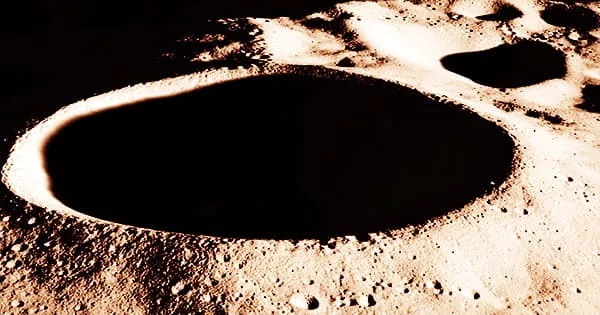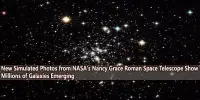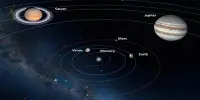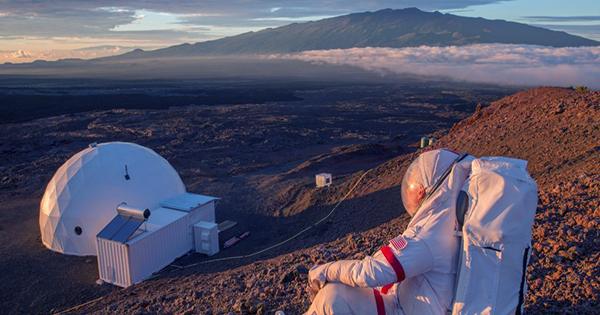The Moon’s south pole region contains some of the solar system’s most extreme environments: it’s unbelievably cold, extensively cratered, and features sections that are either always drenched in sunshine or completely black. This is why, as part of its Artemis program, NASA plans to send astronauts there in 2024.
The craters, some of which never see the light of day reach their floors, are the most attractive aspect of this southernmost region. The low angle of sunlight striking the surface at the poles is the cause behind this.
The Sun would appear on the horizon to a person standing at the lunar South Pole, illuminating the surface sideways and skimming primarily the rims of certain craters while leaving their deep interiors in shadow.
Because of the constant darkness, NASA’s Lunar Reconnaissance Orbiter (LRO) has measured the coldest temperatures ever recorded in the solar system inside these craters, which have become known as ideal settings for keeping material such as water for millennia. So we reasoned.
Water is slowly leaving the topmost, ultra-thin layer (thinner than the diameter of a red blood cell) of the Moon’s surface, despite temperatures that drop to -388 degrees Fahrenheit (-233 degrees Celsius) which can allegedly keep frost-bound in the soil almost forever. This discovery was recently published in the journal Geophysical Research Letters by NASA scientists.
“People think of some areas in these polar craters as trapping water and that’s it,” said William M. Farrell, a plasma physicist at NASA’s Goddard Space Flight Center in Greenbelt, Maryland, who led the lunar frost research. “But there are solar wind particles and meteoroids hitting the surface, and they can drive reactions that typically occur at warmer surface temperatures. That’s something that’s not been emphasized.”

Unlike Earth, which has a thick atmosphere to protect its surface, the Moon has none. As a result, when the Sun shoots charged particles into the solar system, some of them hit the Moon’s surface, kicking up water molecules that bounce about to new places.
Similarly, astray meteoroids slam on the earth’s surface, uprooting soil laced with frozen water. Depending on the size of the meteoroid, these soil particles, which are many times smaller than the width of a human hair, can be hurled as far as 19 miles (30 kilometers) from the impact site.
People think of some areas in these polar craters as trapping water, and that’s it. But there are solar wind particles and meteoroids hitting the surface, and they can drive reactions that typically occur at warmer surface temperatures. That’s something that’s not been emphasized.
William M. Farrell
The particles can travel so far because the Moon has low gravity and no air to slow things down: “So every time you have one of these impacts, a very thin layer of ice grains is spread across the surface, exposed to the heat of the Sun and to the space environment, and eventually sublimated or lost to other environmental processes,” said Dana Hurley, a planetary scientist at the Johns Hopkins University Applied Physics Laboratory in Laurel, Maryland.
While it’s crucial to remember that water is slowly leaking out even in the shaded craters, the authors of the article speculate that water is also being added. Scientists are trying to figure out if icy comets colliding with the Moon, as well as the solar wind, are refilling it as part of a worldwide water cycle. Furthermore, it is unclear how much water is present.
Scientists question if it’s simply at the top layer of the Moon’s surface or if it extends deep into the Moon’s crust.
According to Farrell, Hurley, and their colleagues’ estimations, the topmost layer of polar crater floors is being altered over thousands of years.
As a result, the faint patches of frost seen at the poles by instruments like the LRO’s Lyman Alpha Mapping Project (LAMP) instrument could be only 2,000 years old, rather than the millions or billions of years some might predict, according to Farrell’s research. “We can’t think of these craters as icy dead spots,” he noted.
To corroborate his team’s findings, Farrell stated that a future sensor capable of detecting water vapor should find one to ten water molecules per cubic centimeter unleashed by collisions above the Moon’s surface.
The Good News for Future Lunar Exploration
The dispersion of water particles could be fantastic news for future science and adventure. It means astronauts may not need to expose themselves and their instruments to the hard environment of shadowed crater floors to detect water-rich soil; instead, they may be able to find it in neighboring sunlit places.
“This research is telling us that meteoroids are doing some of the work for us and transporting material from the coldest places to some of the boundary regions where astronauts can access it with a solar-powered rover,” Hurley said. “It’s also telling us that what we need to do is get on the surface of one of these regions and get some firsthand data about what’s happening.”
Getting to the lunar surface would make determining the amount of water on the Moon much easier. Because spotting water from afar, especially in perpetually darkened craters, can be difficult. Remote sensing tools can identify what chemical elements things are made of depending on the light they reflect or absorb, which is how scientists find water.
“But for that, you need a light source,” Hurley said. “And by definition, these permanently shadowed regions don’t have a strong one.”
Understanding the Water Environment on the Moon
Until NASA astronauts return to the Moon to dig up some soil, or until the agency sends new instruments near the surface that can sniff out floating water molecules, the research team’s theory about meteoroids influencing the environment inside shadowed craters could help solve some of the mysteries surrounding the Moon’s water.
It has already aided scientists in determining whether the uppermost surface water is fresh or old, as well as how it might migrate across the Moon. Another reason why scientists are finding patches of wispy frost diluted in the regolith, or Moon dirt, rather than blocks of pure water ice, could be due to meteoroid impacts on the crater floors.
Even if there are numerous water questions, it’s crucial to remember, according to Farrell, that scientists only discovered evidence that the Moon is not a dry, dead rock in the last decade.
The LRO has proven crucial, with thousands of orbits and 1 petabyte of science data returned (equal to around 200,000 high-definition feature-length films streamed online).
After purposefully falling into Cabeus crater in 2009 and releasing a plume of preserved debris from the crater bottom that includes water, the Lunar Crater Observation and Sensing Satellite (LCROSS) detected frozen water.
“We suspected there was water at the poles and learned for sure from LCROSS, but we now have evidence that there’s water at mid-latitudes,” Farrell said. “We also have evidence that there’s water coming from micrometeoroid impacts, and we have measurements of frost. But the question is, how are all these water sources related?”
Farrell and his colleagues are closer than ever to finding an answer to that issue.
















